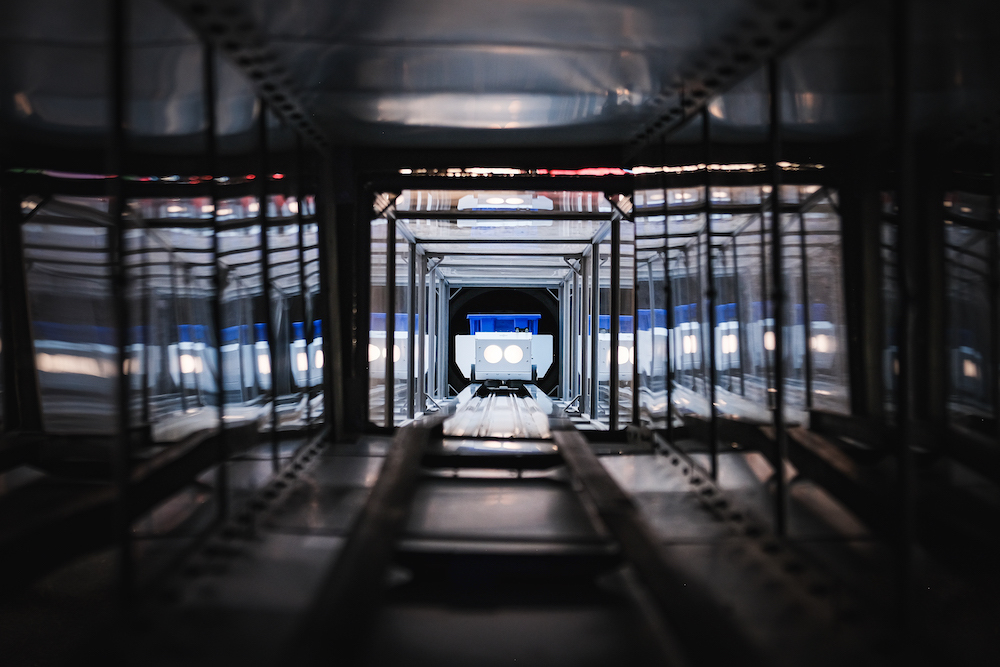Georgia will literally do anything to avoid doing rail infrastructure
Yup visited Atlanta, and boy does that city need a subway and light rail system in the worst fucking way. Also every major Texas city! You have to deal with traffic if you want to do anything. It’s honestly stressful.
Dallas has a light rail system and it’s growing. They need to do more but it’s gotten much better over the last few decades
deleted by creator
Robotics and weather don’t tend to mix well. You can do it obviously, but it introduces a lot more failure points.
You also need to deal with support placement, blocking people’s view, and NIMBYs, where as small cut and cover tunnels arn’t that much more expensive than any other sewer tunnel.
deleted by creator
You need delicate sensors to detect where every vehicle is, to check for fallen branches, that confirm that your switch points actually moved, to communicate with each vehicle, and a thousand other things. All of this needs to work in heavy wind, rain, snow and ice. All of your delicate electronics need to handle massive shifts in temperature, and the resulting expantion and contraction is indeed the primary cause of failed electronics. All of this is exposed to all of the above day in day out for decades.
You can do it, indeed many automated metros and such do exist above ground, but it does significantly add to the cost of everything while dramatically reducing lifespan.
You can’t just put it in the middle of the road becuse you need to support it, and if supports are near cars than they need to be very big cast concrete structures in order to survive the inevitable crashes. You can build big supports and massive beams across the roads to support the track, but all of this adds about as much cost as just trenching it in the first place. There is a reason we don’t put our water mains above our streets.
People do very much care about what gets put above their skyline, and such a system would only really be practical if you were to expand it to residential and commercial areas, after all the primary point of the system is delivery speed, and nearly all industrial goods don’t need same month delivery, much less same hour.
Finally, the ground already often looks like swiss cheese in many cities, it’s just earth is good at spreading out loads and it’s very easy to carry the weight of that earth and the stuff above it with a few inches of concrete. Again, we run large water and sewer lines all over the place.
While this system is unlikely to be practical, Chicago had a similar idea over a hundred years ago after all and abandoned it in favor of trucks for a reason, putting it on stilts over everyone’s heads is not liable to make it more practical.
deleted by creator
A cart that has a computer telling it where to go is a robot.
deleted by creator
If it is on the surface it needs to mix with humans. safety becomes a hard problem. run underground and your safety becomes the simple there is nobody there - if there was the power would have been cut and so the vehicles can’t move.
deleted by creator
But nobody is there so insurance replaces the package and you dig a new tunnel.
deleted by creator
Insurance cannot bring a dead person back to life. It can give the heirs money, but that is not the same. On the surface humans will need to cross the roads and we don’t know how to do that safely. In tunnels humans will never need to cross these vehicles and thus it is much easier to not kill someone.
deleted by creator
Trams have drivers to hit the emergency stop.
You can get insurance to cover whatever you want. Normally it isn’t cost effective to get insurance for small losses from a minor accident, but you can get it if you really want (you will need to see a specialty provider)
Bahahaha Georgia can’t even stop their local government from getting hacked and they wanna add MORE tech?
Bahhaahaha
For everyone who didn’t bother reading the (very short) article, it’s in Peachtree Corners, it’s 1 tunnel about 1.5km long and 2m below ground.
The connection allows staff at the city’s “Curiosity Lab” complex to order lunch from some businesses in the connected shopping center.
Conceptually it could make sense to reduce urban traffic from frequent point to point deliveries, but no, this isn’t going to deliver Amazon packages into your living room.
It’s probably impractical to build these tunnels to everyone’s front door, but they might make sense if they worked like train networks and journeys terminated at local stations. That way the last few hundred meters could be above ground.
If this were ever to take off I wonder how it would be financed? The cost of infrastructure like this would rival the money spent on rail and road projects.
Most people already have saveral tunnles to there house. Electric, tv, phone, internet, water, community heat, natural gas, and sewer. Nobody gets all of that list, but select 3-5 is very common.
small tunnels are cheap enough. cost goes up by size.
deleted by creator
This is incredibly impractical, and no way this is economically feasible for home delivery of goods. This might be somehow practical for moving large quantities of highly valuable items (think hospitals transferring drugsor blood/plasma) over predictable paths regularly in a large, urban area, but the need for that must be relatively infrequent to how much it would cost to maintain a system as described here.
If robots are also building the tunnels it could be economically feasible 🤷
I mean, it depends on how deep they go and the type of soil/dirt they need to go through. I don’t know where this town is (too lazy to research that right now… It’s New Year’s Day, give me a break LOL) but much of Georgia is loose, iron-rich (very red! Like digging a hole out of rust) dirt/sand (the awful-feeling large grain kind) like 20-30ft deep. It’s easy to dig but hard to make a stable tunnel through (it’d just collapse).
If they are just shoving a thin steel “tube” (rectangular like the picture in the article) into the ground and forcing the dirt out (e.g. blow it out with air) that could be very cheap. It’d be like operating a really wide Ditch Witch.









